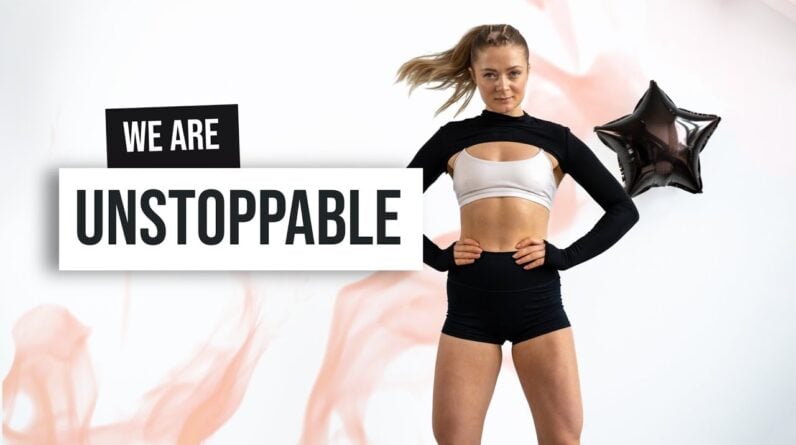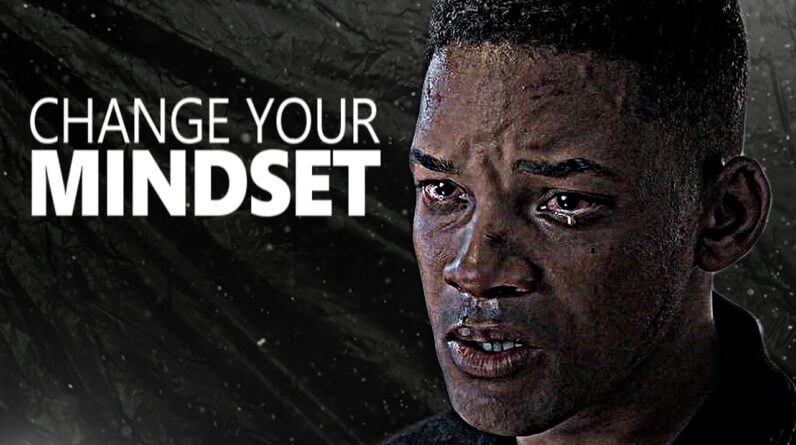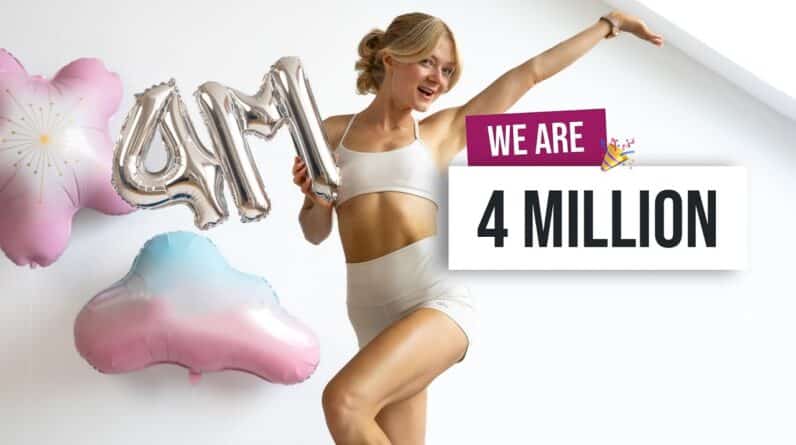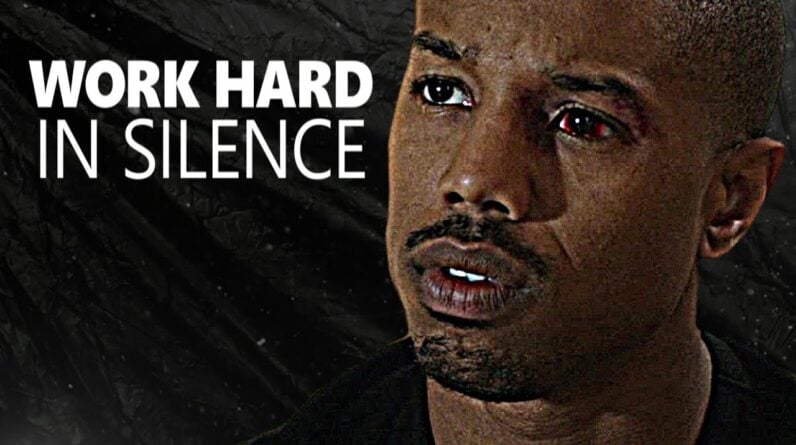
In a dimly lit yoga studio, I was somewhere between cat-cow and threading the needle when tears started swelling up in my eyes. The feeling of deep grief and hopelessness I fought back all day came to a climax while I was on my Lululemon mat. I quickly folded forward into a child’s pose, ignoring the instructor’s flow, and I stayed put for the rest of class. Doing so felt most aligned for me in the moment.
The power of tuning into what your body and soul needs in the present moment is honest and liberating. But that day in the studio, when I was was overcome with emotion, I wasn’t focused first and foremost on what my body was asking of me. Rather, I was just trying to get myself into a compact position, so as to not be remembered “yoga-class crier.”
I laid there raw, belly between my thighs, arms stretched forward like two railroad tracks, and my head peeking between them. Intrusive thoughts took up residence in my mind: Did the teacher think I was being disruptive? Did the other students see me as an annoyance? Yoga is about taking what you need, right?
I’m a certified yoga teacher who had, at that point, facilitated dozens of classes, during which I’d invited students to consider child’s pose, or balasana, as their home base. I welcomed them to find it at any point in class when they needed a moment to recenter or find their breath. During the yoga class when I found myself in child’s pose as a calming measure, I found myself needing to take my own advice—to take a breath, as I was searching for a home.
A reminder: Child’s pose is yoga
Yoga, which means “union,” in sanskrit refers to a marriage of the mind, body, and soul. Meaning, it’s much more than a purely physical exercise. The asanas, or yoga postures, are just one tool yoga offers to help bring the mind to a state of awareness. Asanas alone, though, are not reflective of the full meaning of yoga.
The eight limbs of yoga are philosophies from Patanjali’s Yoga Sutra, which aim to teach how to live a meaningful life and provide a path to enlightenment. Asana is one of the eight limbs. Samadhi is the last phase of the eight limbs of yoga, and it’s characterized by intense focus and arriving at a state of bliss and union with the self. But sometimes, you must wrestle or struggle to access peace, and clarity.
Maintaining my child’s pose was my personal struggle during that class. I chose to tune in to the strong emotions that washed over me as I sought solace; I resisted the urge to get up and back into the flow, in light of fear for what classmates may have thought of me. I didn’t allow my ego to bully me into prioritizing external acceptance over internal need. With deep breaths and a surrendered heart to the earth, I sat in the uncomfortable awareness of it all for the duration of class.
Even so, I never intended to go to yoga class and then break down emotionally. I didn’t consciously realize that I was in a depleted state and needed turn inward before I could outwardly express. After paying the $28 class rate, I fully intended to participate. In fact, movement often supports me in releasing my uninhibited emotions. But my body—as I would soon learn—was beckoning for something different.
Remaining in a child’s pose allowed me to experience my most authentic form of practice at that moment: awareness of self.
Remaining in a child’s pose allowed me to experience my most authentic form of practice at that moment: awareness of self. And immersing myself into my feelings in that one pose for the duration of class was a a fruitful yoga experience.
There’s no way to control when your proverbial dam breaks, and the resulting flow of emotions may overtake you. When this happens, it’s important to take solace in knowing that the only path to liberation is through the chaos. After you fall apart is when you tend to grow. What may feel like destruction, pain, and turmoil in the moment, is what gives way to fertile soil where you can plant new seeds. From there, opportunities can emerge. Sometimes, getting to that fertile ground may involve crying in child’s pose for an entire yoga class.
Child’s pose can be the ‘right use of energy’
Staying in one posture for an extended period of time supported my total emotional surrender. I allowed myself to soften in a way that movement-focused yoga flows wouldn’t have supported. As my forehead touched the ground, I felt safe to fall apart. Soon, tears spilled over the edges of my mat. When moments of self-doubt arose, I self-soothed by rocking my forehead back and forth. I began tapping into my vagus nerve, activating my parasympathetic nervous system, which contributes relaxation of the body. I acknowledged the temporary nature of my feelings, and affirmed I wouldn’t always feel scattered, but in that moment of barely holding on, my emotions were valid and welcomed. I embodied compassion for myself.
There is a yoga principle called brahmacharya, which means “the right use of energy.” Brahmacharya encourages us to be transformed by our yoga practice by listening to our body and letting the practice serve us; by directing our power away from external desires and instead toward finding peace and happiness within ourselves.
Given that yoga means “union,” it’s crucial that I remain open to receive what I need, even if it shows up in a way that feels disruptive. There is a proclivity in movement classes—and life—to push ourselves beyond our edge; to keep up and look accomplished. What if the real accomplishment were giving yourself precisely what you needed, moment by moment, no more or less? To embrace yourself as you are, with all your weaknesses and strengths? To affirm you are powerful and you always have the choice to take what you need unabashedly? That feels like a worthwhile way to spend a yoga session to me. And so I continue inviting students of mine and myself to consider child’s pose as calming home base in yoga.
The Serene Power of Embracing Child’s Pose Throughout Your Entire Yoga Class
Introduction
Yoga is a practice that offers numerous physical and mental benefits. Among the various poses in yoga, Child’s Pose holds a special place. Often used as a resting position, Child’s Pose not only provides physical relaxation but also promotes mental calmness and introspection. In this article, we will explore the serene power of embracing Child’s Pose throughout your entire yoga class.
The Essence of Child’s Pose
Child’s Pose, or Balasana in Sanskrit, is a gentle kneeling posture that involves sitting back on your heels and folding forward with your torso resting on your thighs. It is often performed as a resting pose between more challenging asanas or as a way to reconnect with your breath and find inner peace during the practice.
Child’s Pose is a deeply grounding and nurturing posture that allows you to surrender and let go. It helps release tension in the back, shoulders, and neck while gently stretching the spine, hips, and thighs. The pose also stimulates digestion and promotes relaxation by calming the nervous system.
Physical Benefits
Child’s Pose offers various physical benefits that contribute to your overall well-being. Here are some of the key advantages:
1. Relieves Back Pain
Child’s Pose gently stretches and elongates the spine, providing relief from back pain caused by prolonged sitting or standing. By lengthening the back muscles, it helps alleviate tension and promotes better posture.
2. Stretches Hips and Thighs
As you fold forward in Child’s Pose, your hips and thighs are stretched, releasing tightness and improving flexibility. This can be particularly beneficial for individuals who spend long hours sitting, as it counteracts the negative effects of sedentary lifestyles.
3. Calms the Nervous System
Child’s Pose activates the parasympathetic nervous system, which induces a relaxation response in your body. This helps reduce stress, anxiety, and fatigue, allowing you to experience a greater sense of calm and tranquility.
4. Enhances Digestion
The gentle compression of the abdomen in Child’s Pose stimulates digestion and helps relieve bloating and constipation. It massages the internal organs, promoting better digestive function and overall gut health.
Mental and Emotional Benefits
Child’s Pose not only nurtures the physical body but also has profound mental and emotional benefits. Here’s how embracing this pose throughout your yoga class can enhance your overall well-being:
1. Cultivates Mindfulness
Child’s Pose encourages you to turn inward, bringing awareness to your breath and sensations in the body. It helps cultivate mindfulness, allowing you to be fully present in the moment and let go of distractions or racing thoughts.
2. Relieves Stress and Anxiety
The gentle pressure on the forehead in Child’s Pose activates the third eye chakra, which is associated with intuition and inner peace. This helps alleviate stress and anxiety, promoting a state of deep relaxation and tranquility.
3. Promotes Self-Reflection
Child’s Pose provides a safe space for self-reflection and introspection. As you surrender and let go, you can explore your emotions, thoughts, and intentions. This allows for personal growth and self-discovery, fostering a deeper connection with your inner self.
4. Cultivates Gratitude
Child’s Pose is a gentle reminder to be grateful for the present moment and the opportunity to practice yoga. It encourages you to let go of expectations and judgments, cultivating a sense of gratitude for your body, mind, and the journey of self-care.
Incorporating Child’s Pose into Your Yoga Practice
Child’s Pose can be incorporated into your yoga practice in various ways. Here are a few suggestions:
1. Between Challenging Asanas
Take Child’s Pose as a resting position between more strenuous poses. Allow yourself to recover and regain energy before moving on to the next asana. Use this time to reconnect with your breath and find inner stillness.
2. As a Starting or Closing Pose
Begin or end your yoga practice with Child’s Pose to set a calm and focused intention. Use it as a way to ground yourself before starting your practice or as a closing pose to integrate all the benefits and sensations experienced during your session.
3. Anytime You Need a Break
If at any point during your yoga class you feel overwhelmed or fatigued, honor your body’s needs and take Child’s Pose. Listen to your intuition and allow yourself to rest and recharge before continuing with the practice.
Conclusion
Child’s Pose is not just a resting position in yoga; it is a powerful posture that holds immense serenity and transformative potential. By embracing Child’s Pose throughout your entire yoga class, you can experience physical relaxation, mental calmness, and deep introspection. So, next time you unroll your yoga mat, remember the serene power that lies within Child’s Pose.







